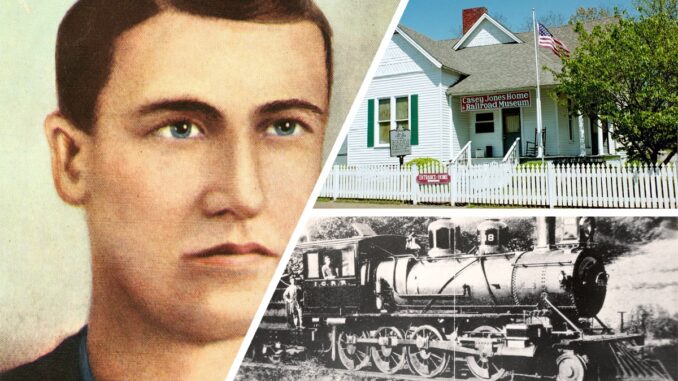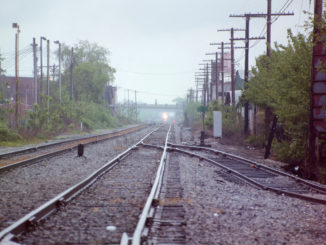
Casey Jones may be the most famous locomotive engineer.
The Illinois Central Railroad engineer gained notoriety for his heroic actions on the morning of April 30, 1900. On that fateful day, he was at the throttle of Illinois Central No. 382, pulling the “Cannonball Express” from Memphis to Canton, Mississippi.
Jones’ train crashed with a stopped freight train at Vaughn, Mississippi. He was the only person killed in the wreck.
While Jones was a real railroad figure, his story is as much — if not more — lore as factual history.
Casey’s Career
John Luther Jones was born on March 14, 1863, in Missouri. In 1876, his family moved to Cayce, Kentucky, and in doing so, Jones picked up a nickname for all of eternity.
Jones entered railroading in 1878 when he was 15. He went to work for the Mobile & Ohio Railroad, starting as a telegraph operator and working his way up to flagman and fireman.
The railroad eventually transferred him to Jackson, Tennessee. There he met his future bride, Mary Joanna “Janie” Brady.
Two weeks after the coupled married on November 25, 1886, he went to work for the Illinois Central. He was promoted to engineer in February 1891.
Whether true or part of his lore, Jones is remembered as a punctual engineer who would always “get her there on the advertised.” He was also noted for his unique way of whistling.
On the evening of April 29, 1900, he filled in for an engineer, Sam Tate, who called in sick.
The Wreck
The train was running behind, leaving Memphis’ Poplar Street Station roughly 95 minutes behind schedule and “highballing” toward Canton. Jones worked to make up time, and they were just minutes behind schedule when they approached Vaughn, Mississippi.
As the train approached Vaughan, Mississippi, shortly before 4 a.m. on April 30, 1900, and traveling upward of 90 mph, a freight train was stopped on the tracks ahead of him due to a broken air hose. Jones ordered his fireman, Sim Webb, to jump to safety; Jones remained in the cab, attempting to bring the train to a halt.
“We were an hour and 35 minutes late when we left Memphis at 2:05 in the morning,” Webb said years later. “We were going to Canton, Miss. We were coming around an ‘S’ curve into Vaughn … when all of a sudden Casey said, ‘oh my Lord, there’s something on the main line.’
“I never dreamed Mr. Casey wasn’t going to jump too. If I’d [known] he was going to have stayed in the cab,” Webb recalled. “I would have stayed with him but he told me to jump and I jumped.”
Webb jumped, survived and lived to tell about it, keeping the story alive for future generations.
While Jones failed in averting a collision, the engineer’s efforts saved the lives of the train’s passengers, though that didn’t stop the railroad from blaming him for the wreck. His bravery made Jones a folk hero — even in an era of far more serious rail calamities.
In the decades after the wreck, newspapers ran accounts of the wreck, contributing to the growth of Jones as a folk hero.
Helping Jones gain stature in history was engine wiper Wallace Saunders, a friend of Jones who penned the words to a song, “The Ballad of Casey Jones.” In 1956, his former house opened as a museum.
While his house was subsequently relocated, it still affords rail buffs the opportunity to walk in the former engineer’s steps.





